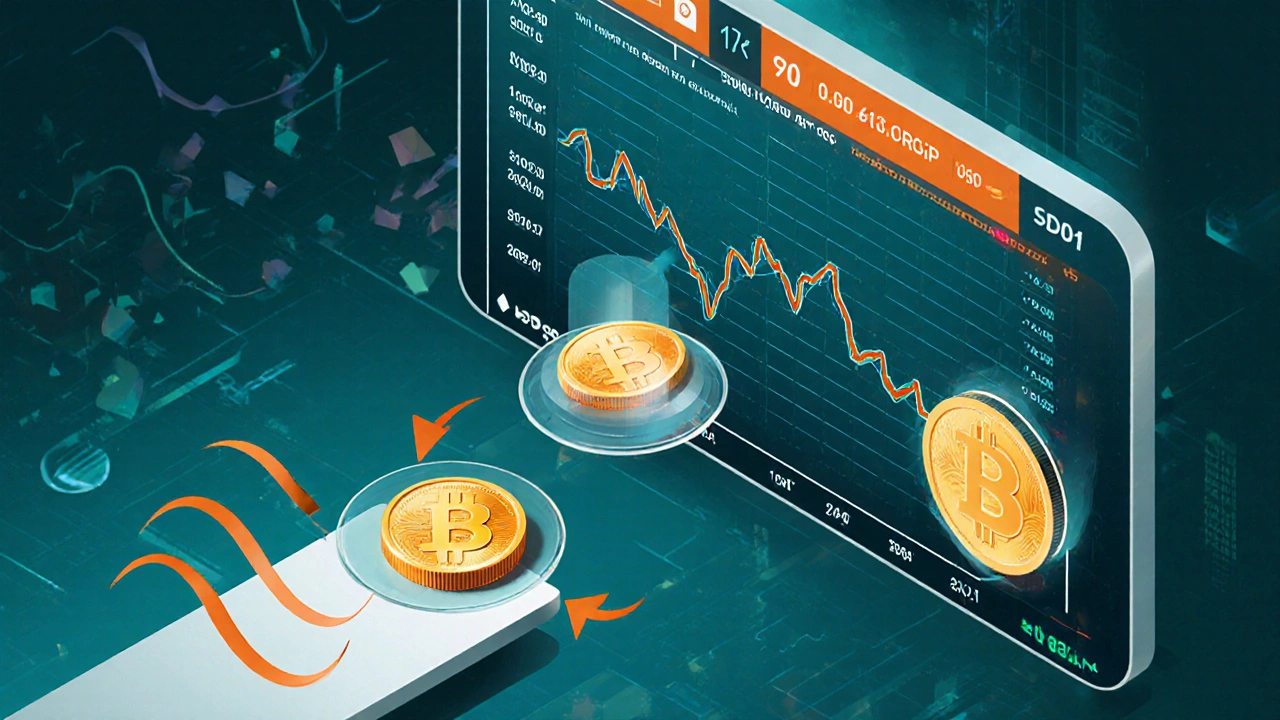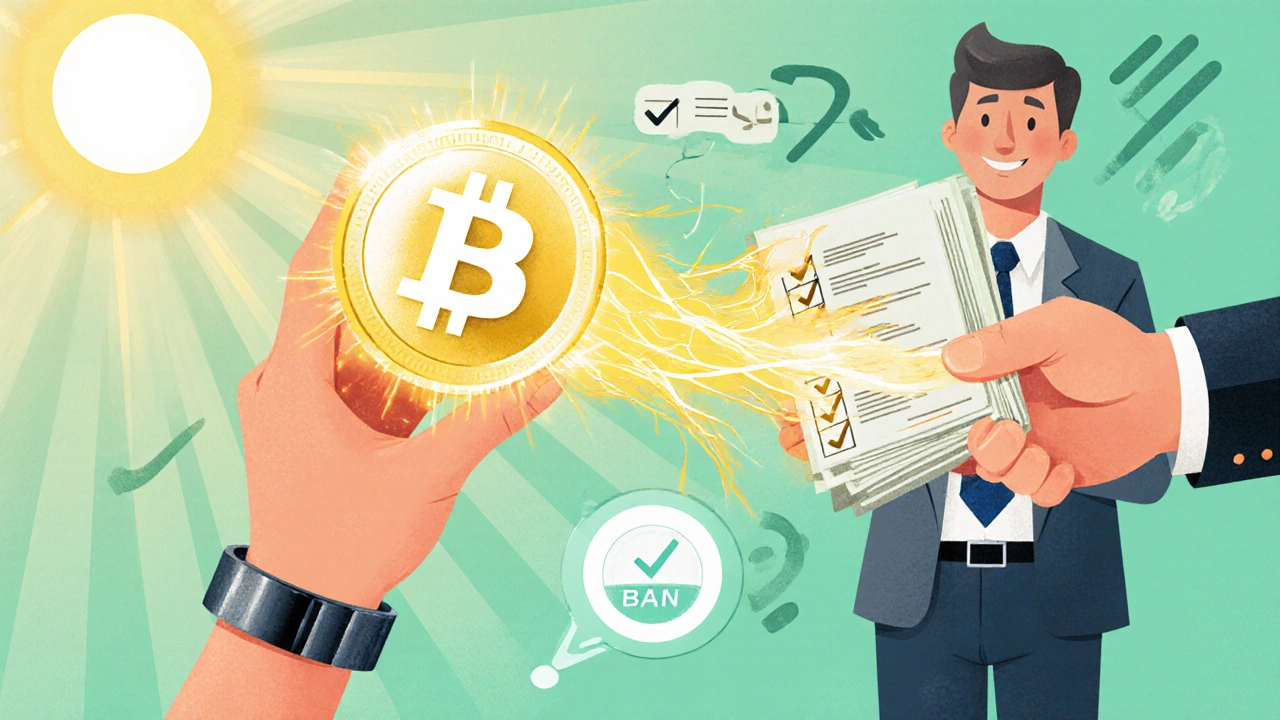Crypto Withdrawal Fee Calculator
Calculate Your Net Value
Estimated Results
Tip from the Article
Choose stablecoin conversion during low network congestion to minimize fees.
Ever tried to move your crypto earnings into your bank account and hit a wall? You’re not alone. Many traders hit roadblocks that feel more like bureaucratic mazes than a simple transfer. Below we break down exactly why cashing out crypto can feel impossible and what you can do to speed it up.
Key Takeaways
- Regulatory checks (KYC/AML) add mandatory verification steps.
- Liquidity shortages on certain exchanges make large withdrawals pricey.
- Bank‑crypto integration is still fragmented, leading to delays.
- Choosing the right withdrawal method and timing can cut fees dramatically.
- A simple checklist helps you avoid the most common pitfalls.
Crypto cash out is the process of converting digital assets like Bitcoin or Ethereum into fiat currency and moving that money to a traditional bank account or payment service. While the concept sounds straightforward, the reality is tangled in regulation, market mechanics, and technical constraints.
Regulatory & Compliance Hurdles
Governments worldwide treat crypto as a taxable asset, which means they impose KYC (Know‑Your‑Customer) and AML (Anti‑Money‑Laundering) checks on every platform that lets you swap crypto for fiat. If your identity isn’t fully verified, the exchange will cap your daily or monthly withdrawal limits-sometimes as low as $1,000.
Why the strictness? Regulators want to prevent illicit flows and ensure tax compliance. The downside for you is extra paperwork: passport scans, proof of address, sometimes even source‑of‑funds statements. Skipping a step usually triggers a manual review that can add days to a simple transfer.
Liquidity & Market Depth
Liquidity is the ability of an exchange to fulfill large orders without moving the price too much. Not every exchange has deep order books for every coin. When you try to withdraw a sizable amount of a less‑traded altcoin, the platform may first need to sell it on the open market.
This selling pressure can create slippage-your crypto sells at a lower price than expected-turning a $10,000 withdrawal into a $9,400 payout after fees. Some platforms mitigate this by using Stablecoins (cryptocurrencies pegged to a fiat value like US$1) as an intermediary, but that adds another conversion step and its own fee tier.

Banking Integration Issues
Traditional banks weren’t built for crypto. While a handful of major banks now accept crypto‑related transfers, many still flag them as “high‑risk” and place holds on incoming funds. In India, for example, RBI‑regulated banks often require a detailed audit trail before releasing a crypto‑derived deposit.
Even if your bank accepts the transfer, ACH or SWIFT processing times can add 2‑5 business days. Some crypto‑friendly fintechs (e.g., certain neobanks) offer instant fiat payouts, but they usually charge premium fees and have lower withdrawal caps.
Technical Barriers: Fees, Networks, and Limits
Every blockchain charges a transaction fee, and those fees can spike during network congestion. During a Bitcoin bull run, fees have topped $30 per transaction, making small withdrawals uneconomical.
Exchanges also set their own withdrawal limits based on user tier, verification level, and the specific crypto. A typical Tier‑1 user might withdraw up to $25,000 per day, while an unverified account may be stuck at $500.
Finally, wallet types matter. If your crypto sits in a non‑custodial Wallet (a software or hardware tool that holds your private keys), you’ll need to move it to the exchange first-a step that incurs an on‑chain fee and adds confirmation time.
How to Smooth the Cash‑Out Process
- Complete Full KYC Early. Upload all required documents the moment you sign up. Once verified, you’ll unlock higher limits and avoid sudden holds.
- Choose an exchange with strong liquidity for your target coin. Platforms that list both spot and futures markets usually have deeper order books.
- Consider converting to a low‑fee stablecoin (USDC, USDT) before the final fiat step. This reduces on‑chain costs and gives you more control over timing.
- Schedule withdrawals during off‑peak network hours. For Ethereum, early mornings UTC often see lower gas prices.
- Split large withdrawals into smaller chunks if your exchange imposes tiered fees. Multiple $5,000 withdrawals can be cheaper than a single $25,000 pull on some platforms.
- Use a crypto‑friendly bank or fintech that supports instant fiat payouts. Check their fee schedule beforehand to compare against traditional bank transfers.
- Keep a clear audit trail: screenshots of transaction hashes, KYC confirmations, and bank statements. This speeds up any manual review.

Cash‑Out Checklist
- ✅ KYC fully verified on your chosen exchange.
- ✅ Desired fiat currency supported (USD, EUR, INR, etc.).
- ✅ Sufficient liquidity for the crypto you plan to sell.
- ✅ Network fees checked and accounted for.
- ✅ Withdrawal limits match your intended amount.
- ✅ Bank account linked and accepted by the exchange.
Common Questions About Cashing Out Crypto
Why does my withdrawal get delayed even after I’ve completed KYC?
Most platforms run an automatic risk‑screening algorithm. If the amount exceeds a certain threshold or your account shows unusual activity, a manual review kicks in. This can add 24‑72hours, especially if the compliance team needs extra documents.
Is it cheaper to withdraw via bank transfer or a crypto‑linked debit card?
Debit‑card payouts are instant but usually carry a higher per‑transaction fee (often 1‑2% of the amount). Bank transfers have lower fees (0.1‑0.5%) but take a few business days. Choose based on urgency vs. cost.
Can I avoid high network fees by using a different blockchain?
Yes. Moving assets to a low‑fee chain (e.g., Polygon or Binance Smart Chain) before cashing out can save dollars on gas. Just make sure the exchange you use supports the bridge and the target chain.
What’s the safest way to keep my crypto before I cash out?
Store large balances in a hardware wallet (e.g., Ledger or Trezor). When you’re ready, move only the amount you plan to sell to a reputable exchange. This limits exposure if the exchange gets hacked.
Do taxes affect how quickly I can withdraw?
Tax authorities don’t directly control withdrawal speed, but many platforms require you to declare the purpose of the withdrawal for tax reporting. Failure to provide this information can trigger compliance holds.
Next Steps & Troubleshooting
If you’ve followed the checklist and still face delays, try these steps:
- Contact the exchange’s support with your transaction ID and a brief description of the issue.
- Switch to a different fiat withdrawal method (e.g., from ACH to wire) to see if the bottleneck is on the bank side.
- Check community forums for recent network fee spikes; sometimes a temporary congestion explains unexpected delays.
Understanding why cashing out crypto feels hard is the first step toward smoother withdrawals. By tackling compliance early, watching liquidity, and picking the right payout channel, you can turn a frustrating process into a routine part of your trading strategy.
cash out crypto doesn’t have to be a nightmare-just plan ahead and you’ll keep more of your earnings in your pocket.
